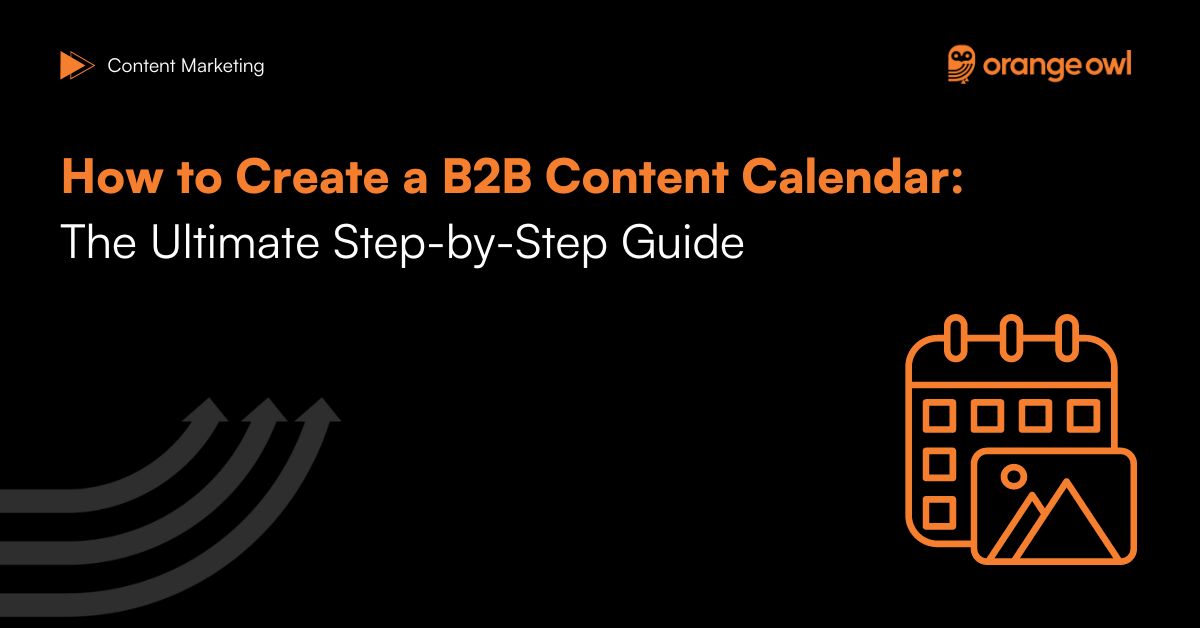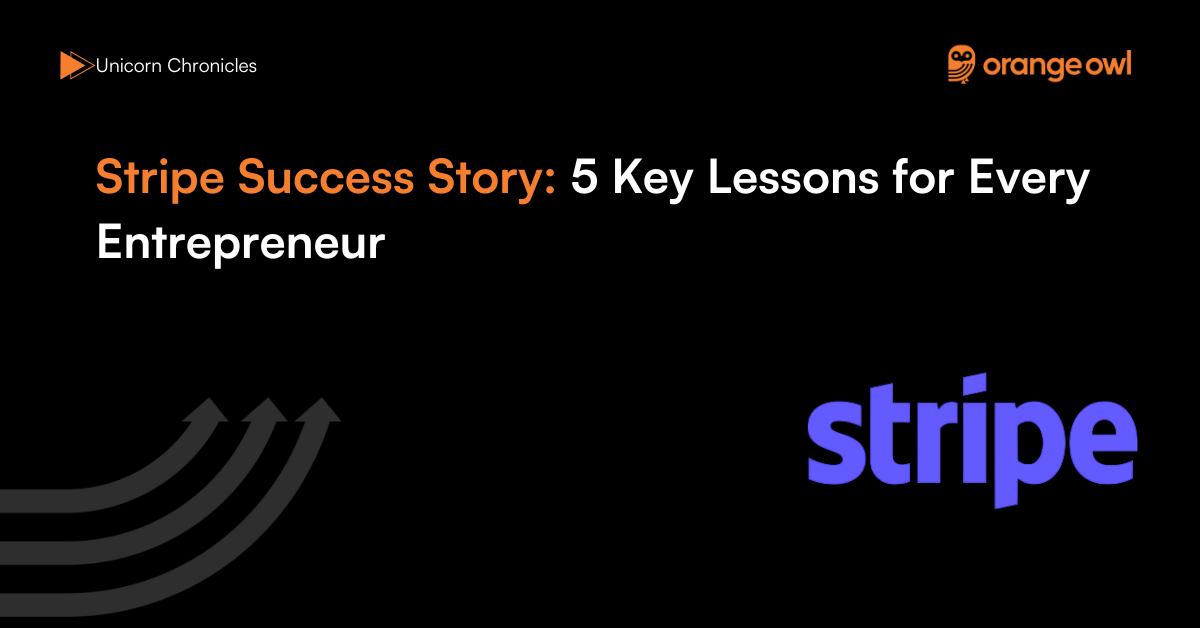How to Create a B2B Content Calendar: The Ultimate Step-by-Step Guide
Vivek Goel
February 4, 2025

Table of Contents
Introduction
In the realm of B2B content marketing, a well-structured content calendar is more than just an organizational tool—it’s a strategic asset. This comprehensive guide will walk you through the steps to create and manage an effective B2B content calendar that not only schedules your marketing tasks but also aligns them with your broader Go-to-Market objectives, ensuring that every piece of content serves a purpose and drives results.
Introduction to B2B Content Calendar
A B2B content calendar organizes all marketing activities, ensuring that they align with company goals and are executed in a timely manner. It helps marketing teams to plan out content publication on blogs, social media, and other channels, keeping track of various stages from ideation to publication and beyond. This systematic approach ensures consistency, aids in the measurement of effectiveness, and enhances the overall strategic impact of content marketing efforts.
Understanding the Importance of a Content Calendar
Before diving into the creation of a content calendar, it’s crucial to understand its significance:
- Strategic Alignment: Ensures all content is purpose-driven, aligning with business goals such as lead generation, brand awareness, or customer education.
- Efficiency and Consistency: Helps teams manage workflow and deadlines, ensuring consistent content delivery that is crucial for keeping the audience engaged.
- Measurement and Optimization: Facilitates tracking of results against objectives, allowing for ongoing optimization based on performance data.
Essential Components of a B2B Content Calendar
A comprehensive content calendar should include:
Content Details
- Content ID: Unique identifier for each piece.
- Title: Clearly state what the content is about.
- Description: A brief overview highlighting the key points and objectives.
- Type: Format of the content (e.g., blog post, video, infographic).
- Category or Topic Cluster: Link to specific campaigns or business objectives.
- Target Persona: Who the content is intended for.
- Purpose/Objective or Funnel Stage: What the content aims to achieve.
- Call to Action (CTA): Desired action for the audience.
Creation Process:
- Assigned to: Who is responsible for creating the content.
- Due Date: When the content needs to be completed.
- Link to Draft: Direct access to the draft for review.
SEO and Keywords:
- Primary Keyword: Main focus for SEO efforts.
- Secondary Keywords: Additional targets.
- Meta Description: SEO-friendly description.
Publishing Details:
- Publication Date: Scheduled live date.
- Platform: Where it will be published.
- Published Link: Direct URL post-publication.
Promotion:
- Promotion Strategy: How the content will be promoted.
- Social Shares: When and where it will be shared on social media.
- Email Blast: Scheduled email promotions.
Performance Tracking:
- KPIs: What metrics will be used to measure success.
- Analytics Review Date: When performance will be evaluated.
Repurposing:
- Repurpose Ideas: Future uses for the content.
- Scheduled Repurposing Date: When it will be repurposed.
Step-by-Step Guide for Creating Your B2B Content Calendar
Creating an effective B2B content calendar involves detailed planning and coordination across multiple teams. Here’s how to break down the process into manageable steps, ensuring that every content piece aligns with your strategic goals and maximizes impact.
Step 1: Define Your Marketing Goals
Before you begin populating your content calendar, clearly define what you aim to achieve with your content strategy. These goals should align with broader marketing and business objectives and might include increasing brand awareness, generating leads, driving website traffic, or positioning your company as a thought leader. Specific goals help direct the content creation process toward measurable outcomes.
Example: If your goal is lead generation, plan content that is more likely to convert readers, such as eBooks, webinars, or free trials.
Fields Impacted:
Purpose/Objective or Funnel Stage: Directly ties each piece of content to a specific marketing goal, such as lead generation or brand awareness, and assigns it a stage in the sales funnel (Awareness, Consideration, Decision).
Step 2: Gather Input from Stakeholders
Content creation is not just a marketing department endeavor; it involves input from various departments to ensure it meets the needs of the entire business. Engage stakeholders from sales, product development, customer service, and executive teams to gain insights into customer questions, product updates, and market trends. This collaborative approach helps ensure that the content is relevant and valuable to both your target audience and your company’s objectives.
Example: Regular meetings with the sales team can reveal common customer objections or questions that new content can address.
Fields Impacted:
Category or Topic Cluster: Develops content themes based on insights from different departments, ensuring the content supports overarching business goals and campaigns.
Target Persona: Refines the audience for each content piece based on stakeholder feedback, focusing on the most relevant buyer personas.
Step 3: Plan Out Content
With your goals set and insights gathered, start planning the specific pieces of content. This involves:
Identifying the Type of Content: Decide on the formats that best convey your message and engage your audience, such as blog posts, videos, infographics, podcasts, or case studies.
Scheduling: Determine the optimal times for publishing based on your audience’s engagement patterns and significant company events like product launches or industry conferences.
Content Theming: Organize content around themes or campaigns to maintain a cohesive narrative over a period. This helps in building a connected story or message across various pieces of content.

Example: For a month focused on “Innovation in Industry,” schedule blog posts, interviews with thought leaders, and a detailed whitepaper on recent technological advances.
Fields Impacted:
Title and Description: Plan and draft preliminary titles and descriptions that align with the content themes and insights gathered.
Type: Decide on the format of each content piece, such as blog posts, videos, or case studies, based on what best suits the content’s purpose and audience.
Due Date and Publish Date: Schedule when each content piece should be completed and when it will be published, aligning with marketing campaigns and business events.
Step 4: Assign Tasks and Deadlines
Clear assignment of responsibilities and deadlines ensures that content moves smoothly from conception to publication. For each piece of content, assign:
Content Creator: Who will write, design, or produce the content.
Editor: Who will review and approve the content before it goes live.
Publisher: Who will handle the technical aspects of getting the content live on the chosen platform.
Marketer: Who will be responsible for promoting the content across various channels.
Use project management tools to keep track of these assignments and deadlines, and set reminders for follow-ups.
Example: Use a tool like Asana to create tasks for each step of the content creation process, assign team members, and set deadlines.
Fields Impacted:
Assigned to: Assigns team members to create, edit, and publish each content piece.
Link to Draft: Provides a direct link to the content draft for easy access by all team members involved.
Review Date and Revisions Date: Sets specific dates for reviewing the content drafts and making necessary revisions to ensure quality and alignment with objectives.
Step 5: Implement and Monitor
Once your content calendar is in place, implement it according to the schedule. Monitoring the performance of each content piece is crucial to understanding what works and what doesn’t. Use analytics tools to track engagement metrics such as views, shares, time on page, and conversion rates. Regular reviews of these metrics should inform adjustments to the B2B content strategy.
Example: Monthly analytics meetings can help determine if the content meets its KPIs, with insights used to tweak the upcoming content for better performance.
Fields Impacted:
Published Link: Tracks the URL or location where the content is published for easy access and monitoring.
Promotion Strategy, Social Shares, Email Blast: Plans and tracks the promotion of each content piece across different platforms and through various marketing activities to maximize reach and engagement.
KPIs and Analytics Review Date: Sets specific performance indicators for each content piece and schedules dates for reviewing these metrics to gauge success and inform future content strategies.
Step 6: Repurposing Content
Introduction: Repurposing content is a strategic approach that extends the life and enhances the value of your original content. By transforming a single piece of content into multiple formats, you can reach a broader audience and reinforce your message across different platforms. This step is crucial for maximizing the impact of your content efforts with minimal additional resources.
Fields Impacted:
Repurpose Ideas: Brainstorm potential new formats or contexts in which the original content can be reused or adapted.
Scheduled Repurposing Date: Plan and schedule when the repurposed content will be released.
Example of Repurposing Content:
Let’s consider a successful blog post titled “5 Key Strategies for Effective Digital Marketing.” Here’s how it can be repurposed across various formats:
Infographic: Summarize the key points of the blog into a visually appealing infographic that can be shared on platforms like Pinterest and LinkedIn. This format is ideal for catching the eye of users who prefer quick, visual summaries of information.
Scheduled Repurposing Date: Two weeks after the original blog post to maintain engagement with the topic.Webinar: Develop a webinar that delves deeper into the “5 Key Strategies” discussed in the blog. Use the blog as a foundation to explore each strategy with real-life examples and interactive Q&A sessions.
Scheduled Repurposing Date: One month after the blog post to capitalize on the interest generated by the blog and infographic.Video Series: Create a series of short videos, each focusing on one of the five strategies. These can be shared on YouTube and embedded in the original blog post to enhance its value and reach a audience that prefers video content over text.
Scheduled Repurposing Date: Spread out over three months, releasing a new video every two weeks to keep the audience engaged over a longer period.Podcast Episode: Discuss the strategies in a podcast format, perhaps inviting experts to speak on each point. This can attract listeners who enjoy consuming content on the go.
Scheduled Repurposing Date: After the last video is released, to continue the momentum and reach audio-centric audiences.E-book: Compile the blog post, infographics, webinar highlights, video transcripts, and podcast discussions into a comprehensive e-book. Offer this as a downloadable resource in exchange for email sign-ups, effectively generating leads.
Scheduled Repurposing Date: Six months after the original post, providing ample time to create a thorough and valuable resource.
Using Tools to Enhance Content Calendar Management
For teams looking to maximize the effectiveness of their content calendars, several tools can help:
- Project Management Software: Tools like Asana and Trello offer features tailored for managing content calendars, including task assignments, deadlines, and progress tracking.
- Content Management Systems (CMS): Platforms like WordPress or HubSpot facilitate content scheduling, publication, and analytics.
- Social Media Management Tools: Buffer and Hootsuite allow for scheduling social media posts in advance, tracking engagement, and integrating social media activities with your calendar.
Conclusion
A well-maintained B2B content calendar is indispensable for any marketing team looking to drive efficiency, consistency, and results in their content marketing efforts. By strategically planning and closely monitoring your content, you can ensure that every piece of content not only reaches its intended audience but also contributes significantly to achieving
FAQs
Update your content calendar at least once a month to incorporate new marketing initiatives, feedback from ongoing campaigns, and shifts in market dynamics. Regular updates ensure your content strategy remains agile and responsive to your audience’s current needs.
Establish a flexible workflow that allows for adjustments without disrupting the overall plan. This might include having buffer periods for urgent content needs or reshuffling publication dates. Regular team meetings can help quickly address and implement these changes.
Yes, many content calendars can be integrated with CRM systems, email marketing platforms, and project management tools. This integration helps streamline workflows, improve communication across teams, and provide insights that enhance content planning and execution.
Success can be measured by how well the content meets its KPIs, which should be defined in the calendar. Metrics might include engagement rates, lead generation, and conversion rates. Regular reviews should be scheduled to assess these metrics and adjust strategies as necessary.
Best practice involves clearly defining roles and responsibilities for each stage of the content process, from ideation to publication and promotion. Use a project management tool to assign tasks, set deadlines, and monitor progress to ensure accountability and efficient workflow management.



